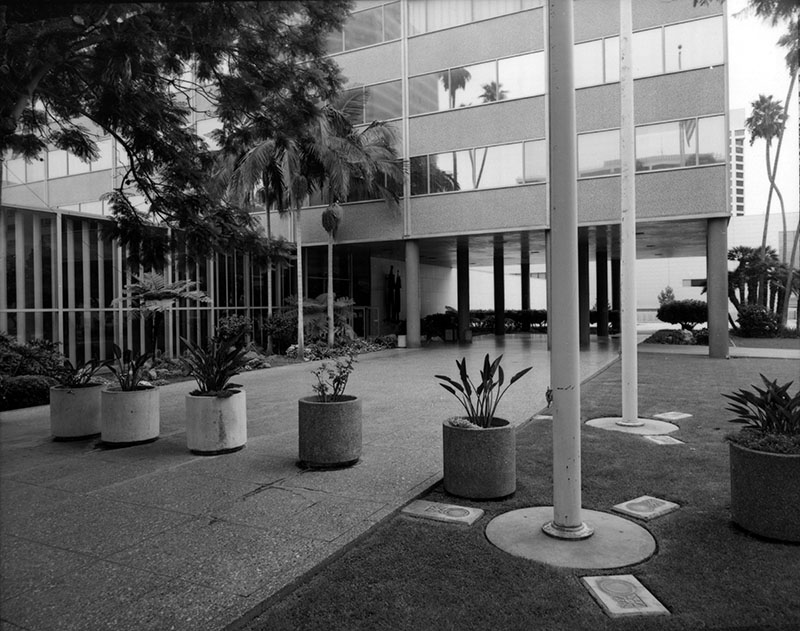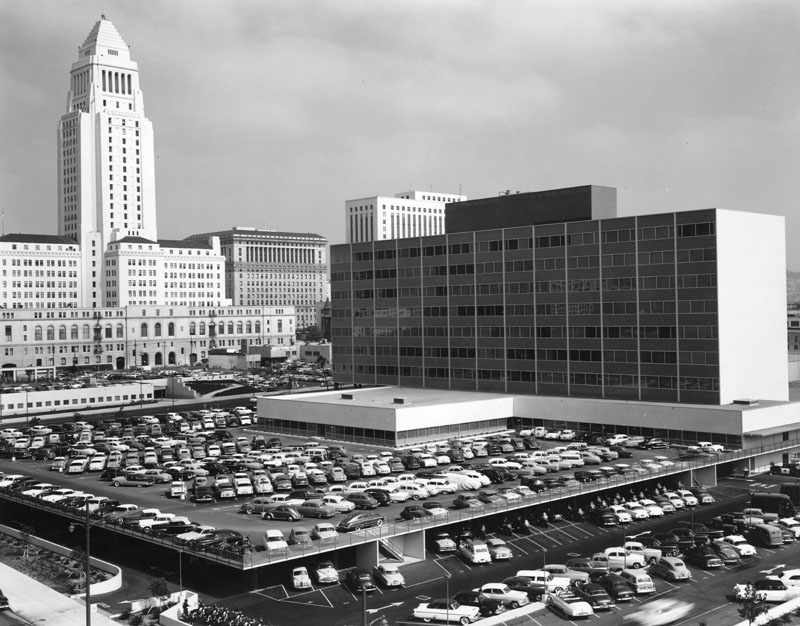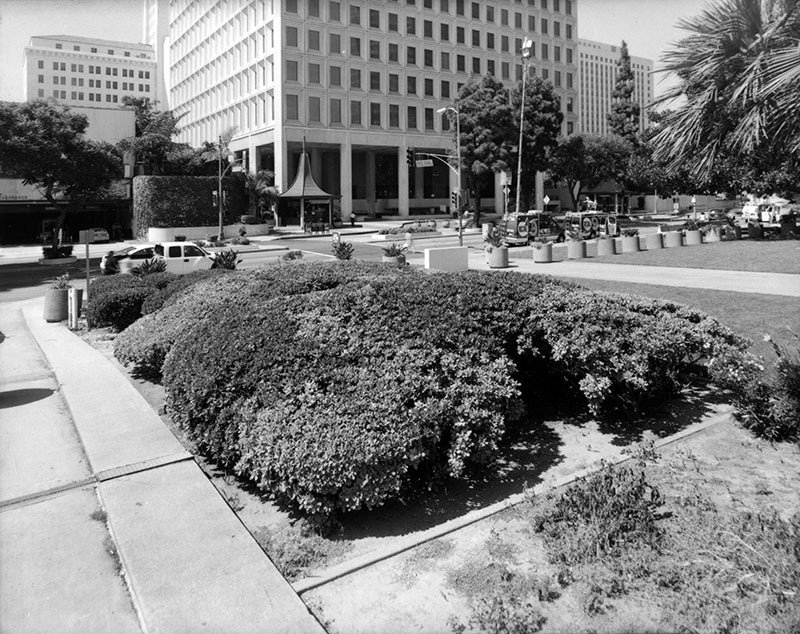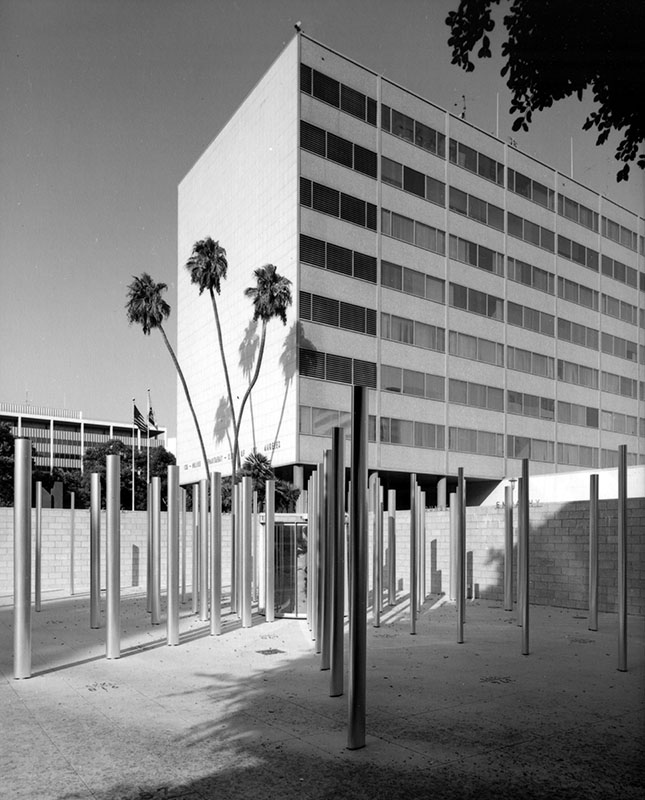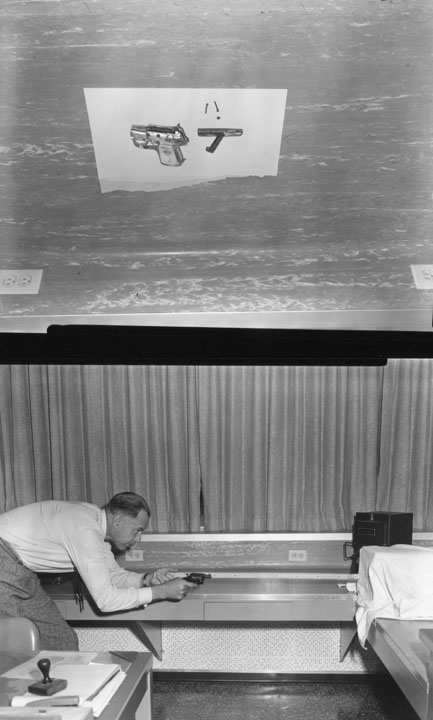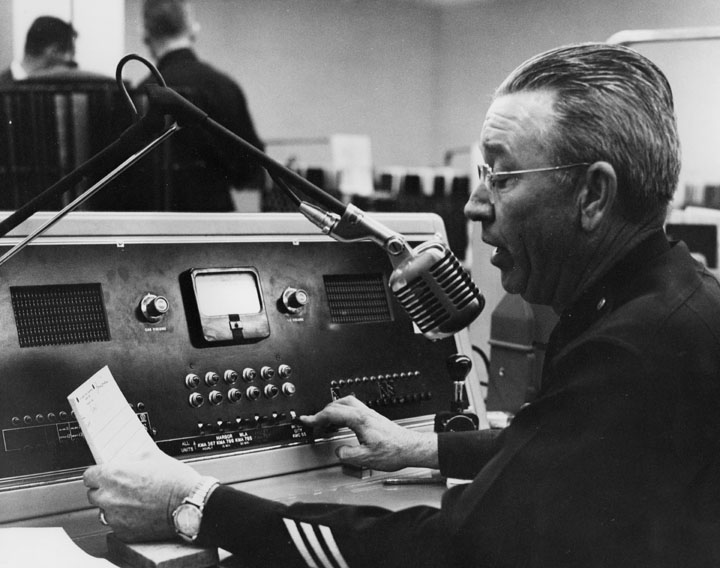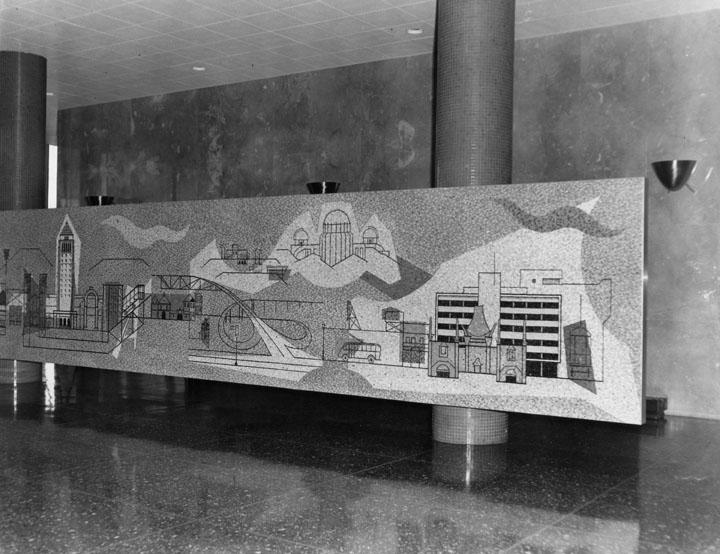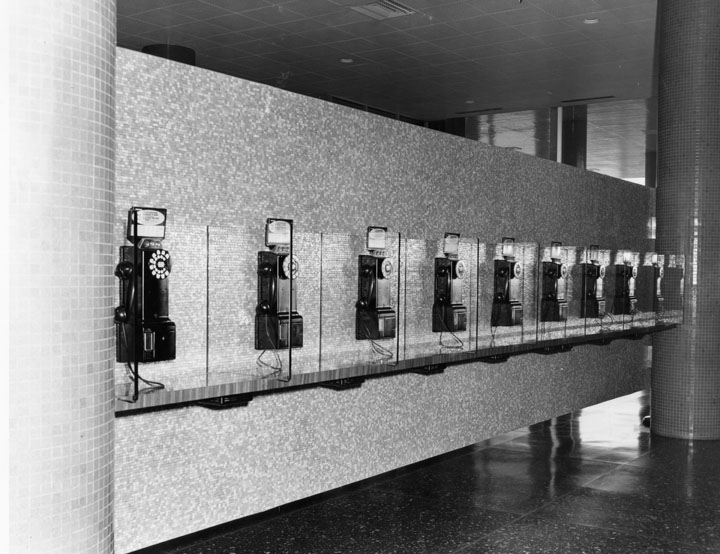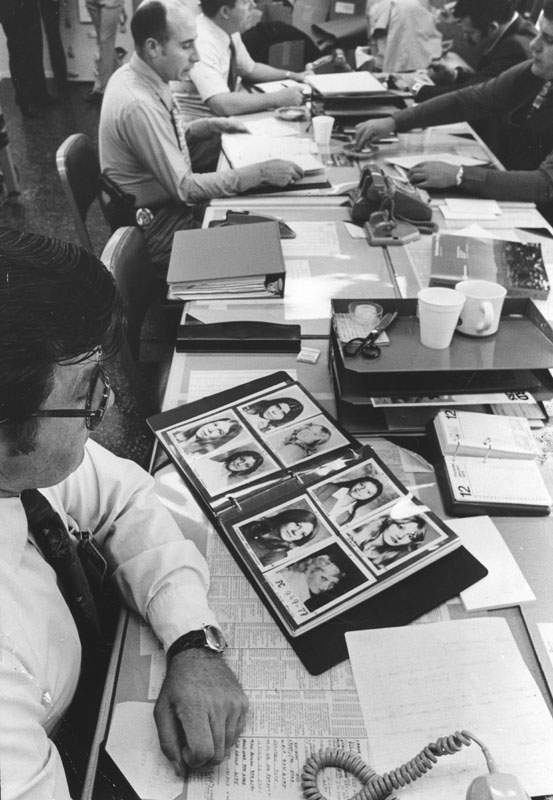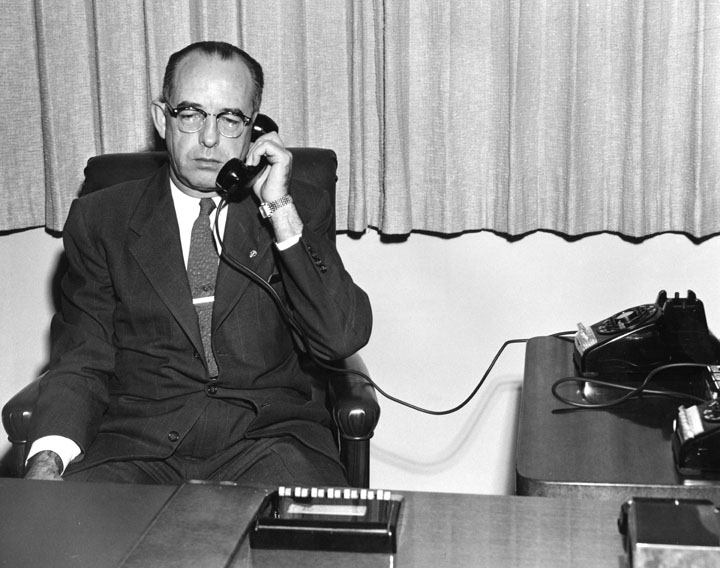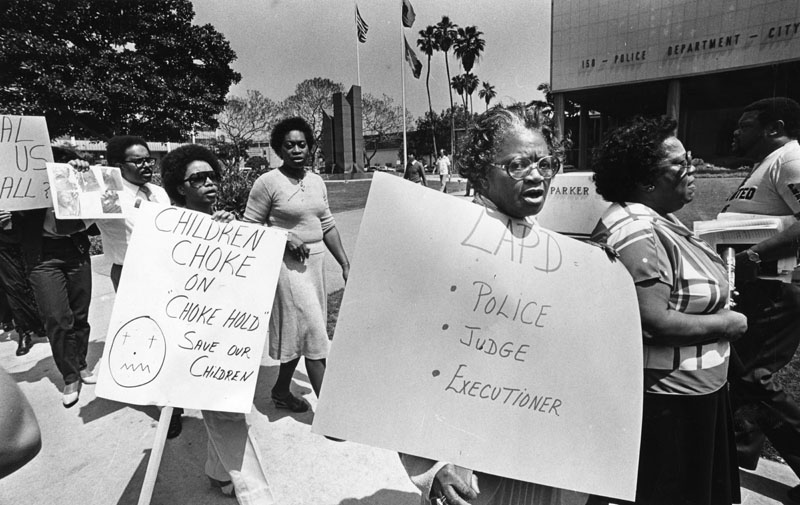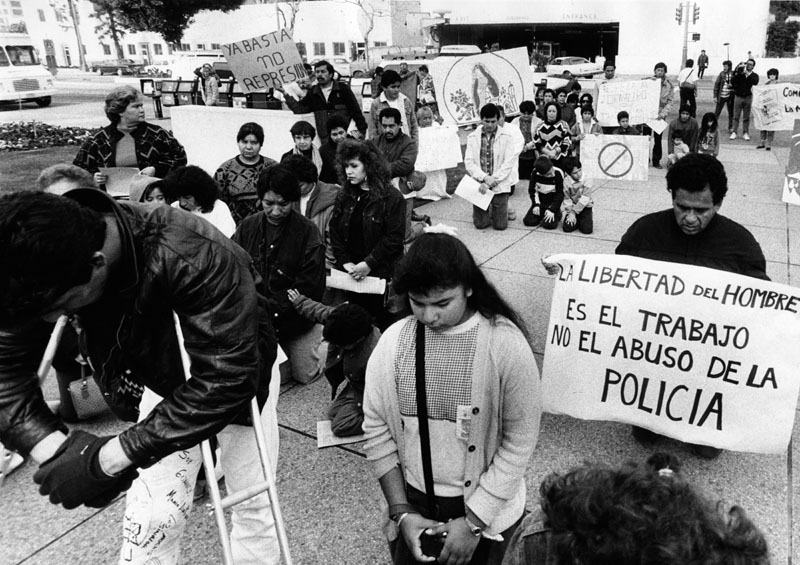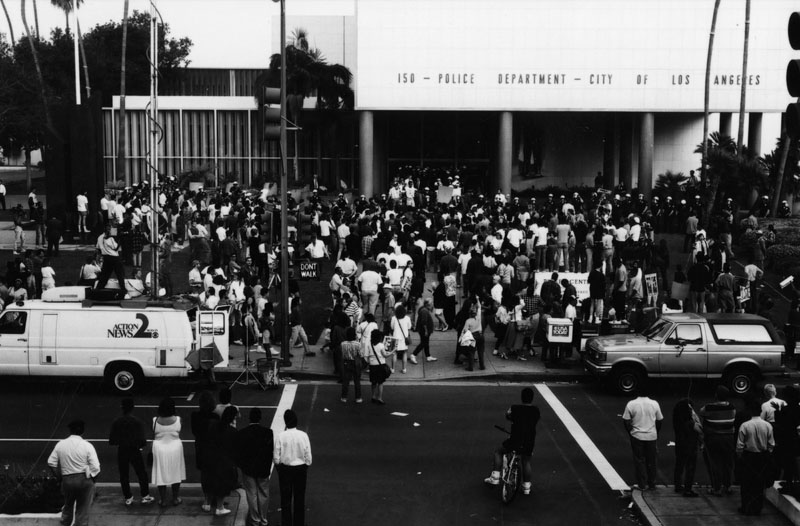Designed by architect Welton Becket, the Police Administration Building served as police headquarters for the Los Angeles Police Department from 1954 until 2009. Groundbreaking for the downtown facility began in 1952, with construction finishing in 1955. When Police Chief William Parker died in 1966 (after 15 years in office), the building was renamed Parker Center in his honor.
The facility was designed in the Modernist fashion which encouraged the union of indoor and outdoor space and elements. As time passed and the police force grew and technology changed, the building needed retrofitting and updating, all of which proved to be more expensive than building a new facility. Construction for new LAPD headquarters (located at the corner of Main and First Streets) began in 2007 and finished in 2009.
Despite having a shiny new police headquarters, many people still think of Parker Center when the subject of LAPD headquarters comes up. Besides serving the citizens of L.A. for 55 years, Parker Center is known by people the world over due to being showcased in films, television shows, video games, music videos, novels, and true crime stories. Like many in L.A., Parker Center was in the biz.
In 2015, the Cultural Heritage Commission recommended that Parker Center be made a protected city landmark. While the city reviewed that nomination, a city councilman put forth a motion to demolish the building. Alas, this motion passed without any fierce opposition and the building is set to be razed. (Note: The date for the demolition of Parker Center was postponed due to a clerical error.)
The photo collection of the Los Angeles Public Library has many images showing the interior, exterior, and outer grounds of Parker Center, giving viewers a glimpse of its style and showing major events and everyday workings of this slice of L.A. history.
Here is the plaza at Parker Center as seen from the parking lot. Note the clean lines and modern glass windows which earned the structure the nickname “the Glass House”.
Heritage Documentation Programs Collection, Historic American Landscapes
Survey Collection, photographed by Brian Grogan in 2005.
A panoramic view shows Parker Center (to the right) with City Hall in the background (tall white building to the left).
Security Pacific National Bank Collection (photographer and date unknown).
A view of the landscaping near the parking area shows well-manicured hedges with plants in planters surrounding the main lawn.
Heritage Documentation Programs Collection, Historic American Landscapes
Survey Collection, photographed by Brian Grogan in 2005.
Parker Center serves as the backdrop for the art installation titled “Eye of the Storm” while looking quite artistic itself with palm tree shadows accenting the structure.
Heritage Documentation Programs Collection, Historic American Landscapes
Survey Collection, photographed by Brian Grogan in 2005.
A gun is laid out for photographing and then tested by a lab technician for the L.A.P.D. Scientific Investigations Unit at Parker Center.
Ralph Morris Collection, photographed by Ralph Morris (date unknown).
A policeman speaks into a radio at Parker Center, providing information for officers in patrol cars.
Security Pacific National Bank Collection (photographer and date unknown).
A worker stands inside a safe at Parker Center.
Security Pacific National Bank Collection, photographed by
Jack B. Kemmerer (date unknown).
A mosaic depicting landmarks of Los Angeles graces the lobby of Parker Center.
Ralph Morris Collection, photographed by Ralph Morris in 1955.
A bank of telephones is ready for use by the public and reporters at Parker Center.
Security Pacific National Bank Collection, photographed by
Jack B. Kemmerer in 1955.
The Hillside Strangler Task Force had a room of its own at Parker Center where investigators could review photos and discuss leads and evidence.
Herald-Examiner Collection, photographed by Michael Haering on January 15, 1978.
William H. Parker was Chief of Police for the Los Angeles Police Department from 1950 until his death in 1966. Here is seen at his desk in Parker Center.
Security Pacific National Bank Collection, photographed by
Jack B. Kemmerer (date unknown).
Parker Center saw its share of protests and public outrage. In this photo, Vietnam War protestors marching through downtown file past Parker Center.
Herald-Examiner Collection, photograph taken July 9, 1967 (photographer unknown).
A group of people gathers outside Parker Center to protest the use of the chokehold by police officers.
Herald-Examiner Collection, photographed by Rob Brown on April 28, 1982.
Here we see demonstrators kneeling in protest against the police action of rounding up and detaining day laborers.
Herald-Examiner Collection, photographed by Michael Haering on February 20, 1989.
In this photo, we see protestors angry about the outcome of the Rodney King trial.
Gary Leonard Collection, photographed by Gary Leonard on April 29, 1992.
A studio prop police car is parked in front of Parker Center, making the building ready for its close-up.
Valley Times Collection, photographed on December 7, 1963 (photographer unknown).

